The ECZ Luminous (JNM-ECZL series) is an FT NMR spectrometer equipped with state-of-the-art digital and high-frequency technology. The Smart Transceiver System, a high-speed, high-precision digital high-frequency control circuit, allows for further miniaturization and higher spectrometer reliability. It is capable of high-field and solid-state NMR measurements while maintaining the size of a conventional low-field solution NMR system.
On a single physical RF channel, several nuclear pulse trains can be operated using the new Multi Frequency Drive System. This means that complex modern NMR experiments can be run on a spectrometer with a straighforward configuration.
This series is the one that is frequenty offered for spectrometers of all NMR frequencies that are manufactured by JEOL.
JNM-ECZL series FT NMR
Video Credit: JEOL USA, Inc.
Key Features
MFDS (Multi Frequency Drive System)
JEOL has developed a brand-new multi-frequency drive system. Expanding on the ECZ system’s initial concept, the ECZ Luminous system allows for multiple resonance measurements employing triple-resonance probes like the HCN and HCX probes on a conventional two-channel spectrometer.
As a result, sophisticated multi-nuclei investigations can be performed using an exceptionally low-cost, simple NMR system.
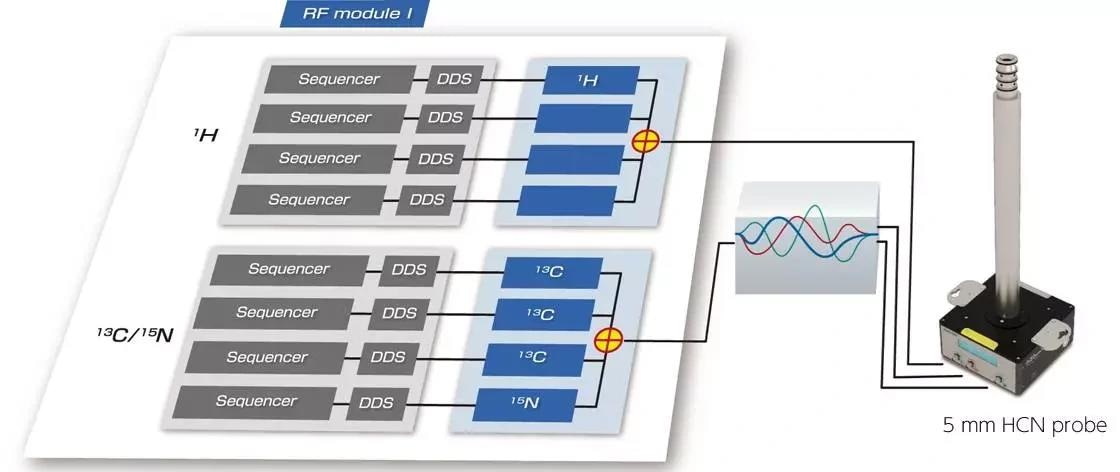
5 mm HCN probe configuration with ECZ Luminous System. Image Credit: JEOL USA, Inc.
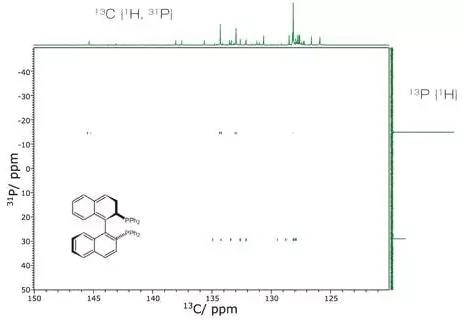
HCP triple resonance experiment performed by 2 channel spectrometers (¹³C-³¹P {¹H} correlation). Image Credit: JEOL USA, Inc.
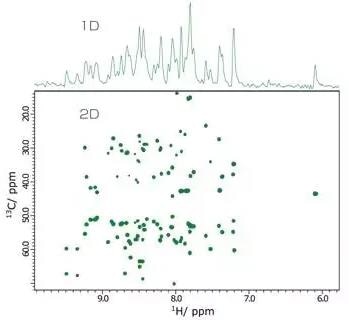
HCN triple resonance experiment performed by 2 channel spectrometer (CBCACONH). Image Credit: JEOL USA, Inc.
STS (Smart Transceiver System)
The ECZ Luminous inherits the digital high integration of the STS (Smart Transceiver System) and the high-frequency technology used in the previous ECZ series. The sequencer, DDS (Direct Digital Synthesizer), FSU (Frequency Synthesizer Unit), transmitter, receiver, acquisition unit, and gate control unit are all integrated on a single RF (Radio Frequency) transmitter/receiver board.
A single RF transmitter/receiver board is constructed with two 4-frequency source units — one for HF and one for LF — and one receiver.
Eight frequency sources and one receiver are included in the standard arrangement. Up to eight nuclei, 32-frequency sources, and four receivers can be supported by the ECZ Luminous when upgraded to four RF transmitter/receiver boards.
The STS’s transmitter/receiver system also combines direct conversion oversampling and superheterodyne undersampling technologies, enabling flexible frequency conversion and effective and optimum signal transmission/reception depending on the target frequency.

Frequency modulation changed from 0 to 10 MHz. Image Credit: JEOL USA, Inc.
Highly Precise Digital Control
The minimum time resolution of the ECZ Luminous sequencer is 5 ns, and it offers quick control of frequency, phase, and amplitude modulation. The ECZ Luminous also contains a digital quadrature detection (DQD) circuit that permits dynamic frequency and phase modulation synchronously or asynchronously in the transmitter and receiver systems.
This enables signal processing with high functionality and a high degree of freedom and is expected to be applied to cutting-edge solid-state NMR measurements, which have become increasingly important in recent years. In addition, the sequence memory, which has a quasi-infinite memory capacity, is combined with a unique streaming transfer method.
The same control performance is offered simultaneously for several gating and synchronization procedures with external systems. These digital control technologies with high speed and precision offer an ideal solution for a wide range of requirements to accomplish a wide range of sophisticated NMR experiments.

PM-BEBOP180 Phase modulated pulse. Image Credit: JEOL USA, Inc.
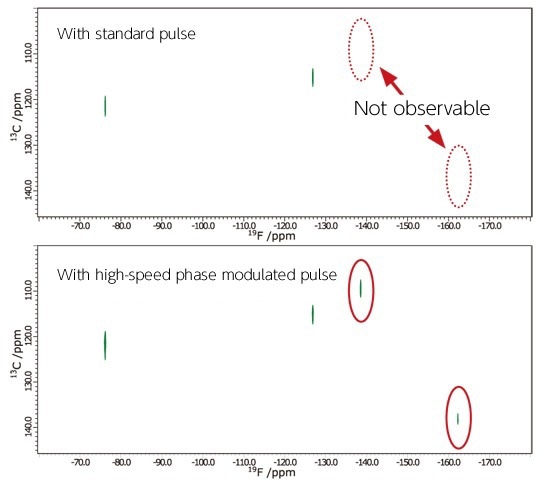
1H decoupled 19F-13C HMQC 2D spectrum. Image Credit: JEOL USA, Inc.
Wide Dynamic Range
The ECZ Luminous' high dynamic range enables users to clearly capture small NMR signals in NMR spectra, even in the presence of strong NMR signals (i.e., residual solvent signal).
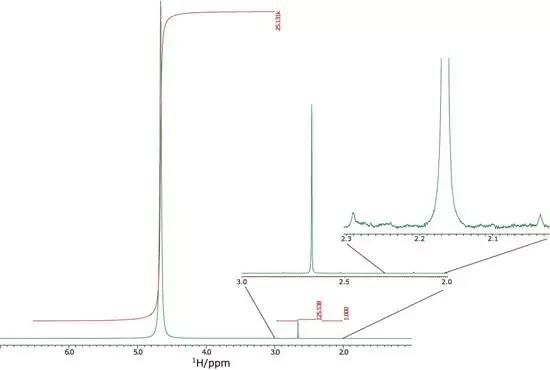
A small 13C satellite signal (about 4.6 millionths) of the acetone signal in a mixed sample: H2O: DMSO: Acetone=25131:125:1 (about 10% D2O) is clearly visible. Image Credit: JEOL USA, Inc.
Low-Noise Preamplifiers
Sensitivity is enhanced by newly developed low-noise preamplifiers. The sensitivity can be improved by 10% when used in conjunction with ROYALPROBE™/ROYALPROBE™ HFX.
Digital Lock Circuit for Stability
The ECZ Luminous uses STS technology to digitally control the 2H lock with high accuracy and high speed. The impacts of magnetic field fluctuations are more effectively suppressed due to the good response control of the digital feedback circuit.
The high speed and high precision digital lock feedback function allows for long and stable time measurement.
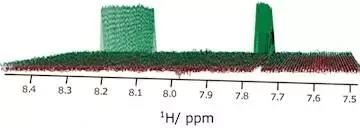
Stability test data over 12 hours 1D1H-13C HMQC needs to observe the correlated signal (left and right signals) of 13C-coupled1H, which has an existence ratio of about 1%, and eliminate the directly observed signal of 12C-coupled1H, which has an existence ratio of about 99%. This is why it is used to check stability. Image Credit: JEOL USA, Inc.
Easy Shimming
ECZ Luminous features improved shim sets. Moreover, the speed of automated 1D and 3D gradient shimming routines has increased substantially in comparison to ECZ systems, improving high throughput NMR measurements.
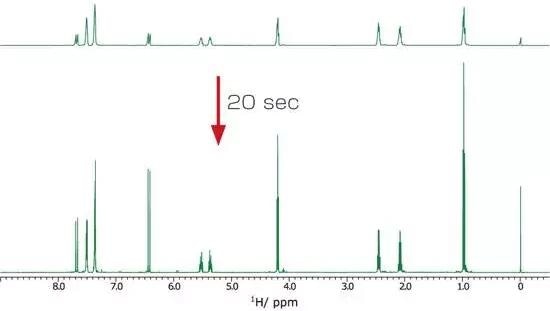
Gradient shimming (2H). Spectra before and after resolution adjustment by gradient shim. The resolution is improved by 20 seconds. Image Credit: JEOL USA, Inc.
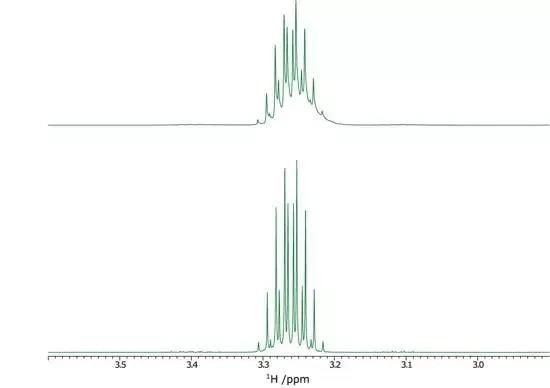
Gradient shimming (19F). You can select the 19F signal and use it to adjust the resolution with gradient shimming as well as the 2H signal. Image Credit: JEOL USA, Inc.
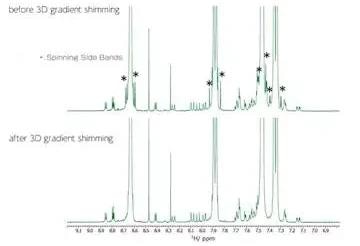
Poorly adjusted radial shims under sample rotation (top) and corrected with 3D gradient shimming (bottom). Image Credit: JEOL USA, Inc.
Specifications
More Compact Spectrometer
While offering enhanced spectrometer performance, ECZ Luminous is also significantly smaller in size. The R series has a volume that is roughly one-third that of its conventional equivalent.
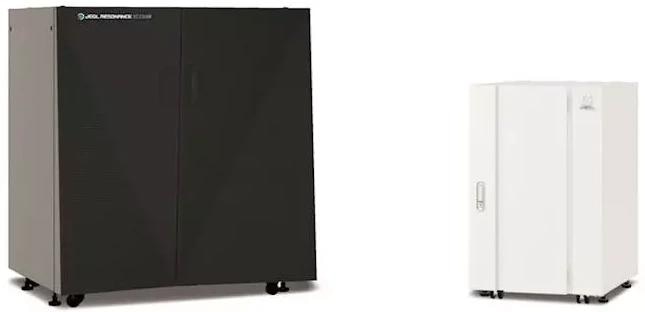
Size comparison with conventional models with equivalent performance. Image Credit: JEOL USA, Inc.
Specifications
Source: JEOL USA, Inc.
| |
JNM-ECZL G series |
JNM-ECZL R series |
JNM-ECZL S series |
| Frequency |
400 MHz - 1.3 GHz |
400 MHz - 600 MHz |
400 MHz |
| Sample type |
Solution / Solid |
Solution / Solid |
Solution |
| Number of channels |
2 (standard) |
2 |
2 |
| Power amplifier |
100 W (standard) |
100 W |
50 W |
| High frequency |
200/500/1000 W (as optional) |
|
|
| Power amplifier |
300 W (standard) |
300 W |
150 W |
| Low frequency |
500/1000/2000 W (as optional) |
|
|
| Magnetic field gradient amplifier |
10 A (standard)
30/50 A (as optional) |
10 A |
10 A |
| Console size W×D×H |
600×855×1,279 mm |
536×730×855 mm |
536×730×855 mm |
Lineup
Three distinct variants of the ECZ Luminous are offered to accommodate a wide range of user requirements. All versions come equipped with user-friendly Delta software and high-performance digital high-frequency technology.
JNM-ECZL G Series
The ECZL G series is a flagship model for modern NMR techniques. While preserving the expandability required to serve a variety of applications, the spectrometer’s footprint has been decreased to less than 60% of ECZR.
With support for three or more channels, high-power amplifiers, and high-output magnetic field gradients, it is adaptable in terms of growth and can be deployed in a minimal configuration while still allowing for future functional development. It is a flexible FT-NMR system that can respond to changes in user applications and the introduction of the latest applications.
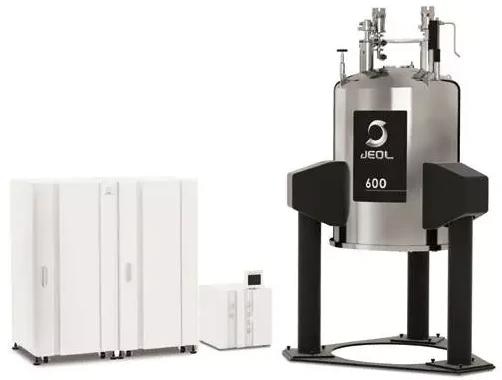
Dual rack configuration. Image Credit: JEOL USA, Inc.
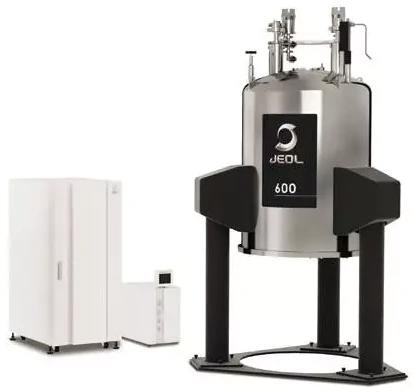
Image Credit: JEOL USA, Inc.
JNM-ECZL R Series
The ECZL R series is a compact spectrometer that is compatible with magnetic fields of up to 600 MHz. The footprint is less than 50% of that of ECZR, and it can also be used for solid-state measurements.
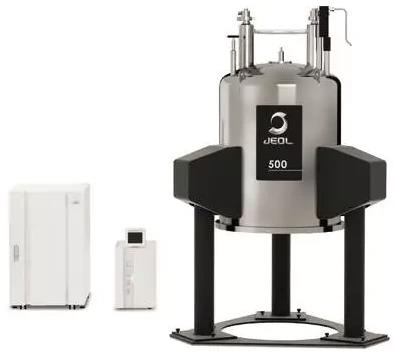
Image Credit: JEOL USA, Inc.
JNM-ECZL S Series
The ECZL S series is a simplified version that incorporates the high-performance digital high-frequency technology of the ECZL series and is devoted to 400 MHz solutions-state NMR.
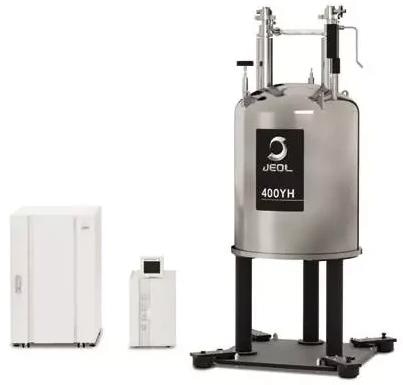
Image Credit: JEOL USA, Inc.